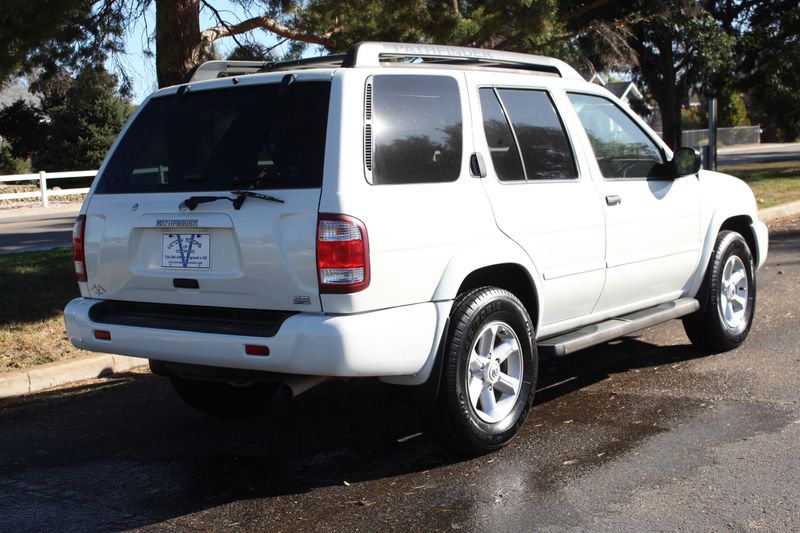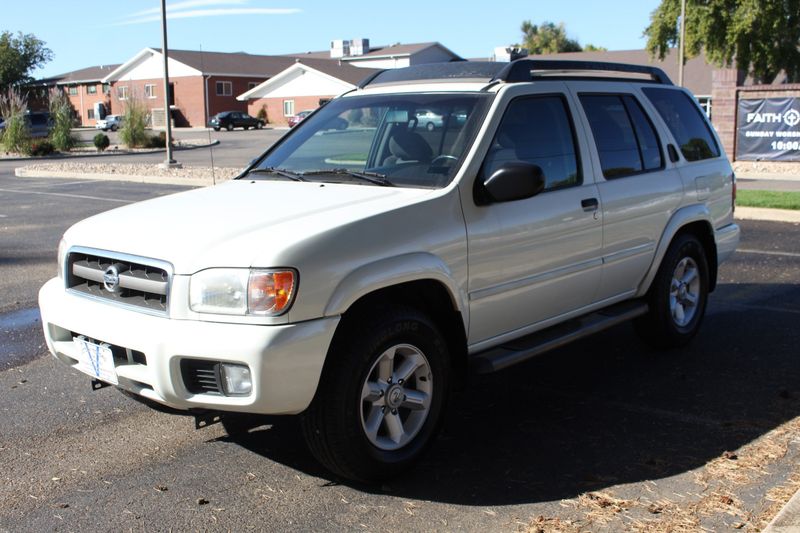

Replacing the 3.3-liter mill was the VQ-series 3.5-liter V6 that featured a 24 valve design and a whopping 240 horsepower (with an extra 10 ponies on tap if you swapped the four-speed for the five-speed offered in the base trim).
2004 nissan pathfinder update#
Performance from this engine was better than the four-cylinder units found in some of its competitors (and indeed, the tough but relatively slow four-banger offered by the original Pathfinder), but a major update for the 2001 model year would transform the SUV's character.
2004 nissan pathfinder manual#
The VG33E was good for 170hp and just under 200 lb-ft of torque, and could be matched with either a four-speed automatic or a five-speed manual transmission. Under the hood, the Nissan Pathfinder rode out the 90s with a 3.3-liter V6 engine calling the shots. All base versions of the Pathfinder featured the TX10A, but from 2001-onwards higher trim levels could be ordered with All-Mode, which also featured a locking center differential. This was on top of 4HI, 4LO and 2WD settings. Under its sheet metal, the 1996-2004 Nissan Pathfinder features a five-link suspension setup for its solid rear axle, as well as power rack and pinion steering and a pair of struts up front.įour-wheel drive systems included a traditional part-time setup (TX10A transfer case) or something Nissan called 'All-Mode,' which provided an auto mode that would distribute torque to the front axle in the event of wheel spin. The company called its chassis a 'monoframe,' which married a traditional unibody upper structure with welded steel frame rails in its subframe, and together it made the truck three times as rigid as the ladder frame first-generation Pathfinder. Nissan also went out of its way to ensure that the R50 Pathfinder was tough enough to handle leaving the pavement behind. The Jeep Cherokee XJ is the perfect example of a unibody truck that enjoys a massive cult following among off-road fans.
2004 nissan pathfinder full#
The reason? Despite its beefy truck-like looks, this version of the Pathfinder left behind the full-frame design of its predecessor and adopted a unibody platform.Īlthough the prevailing wisdom among those building a trail-capable rig is that a full frame is the best option, there's more than one successful 4x4 family out there that's had great success with a unibody design. Otherwise known as the 'R50,' the second-generation Nissan Pathfinder might not at first seem like an obvious off-road choice.

Although the Pathfinder would later morph into a larger, three-row SUV, the version built from 1996 to 2004 is the sweet spot for anyone seeking outdoor adventure on a modest budget. The extra cash required to pick up a Land Cruiser or a 4Runner often has wheeling fans seeking an alternative that offers the same levels of capability with a similarly cheap maintenance schedule at a much lower cost of entry.Įnter the Nissan Pathfinder, a direct rival to the Toyota 4Runner that represents a very similar package and which features nearly as strong of a fanbase. The Toyota tax is real for 4x4 fans seeking a reliable off-roader.


 0 kommentar(er)
0 kommentar(er)
